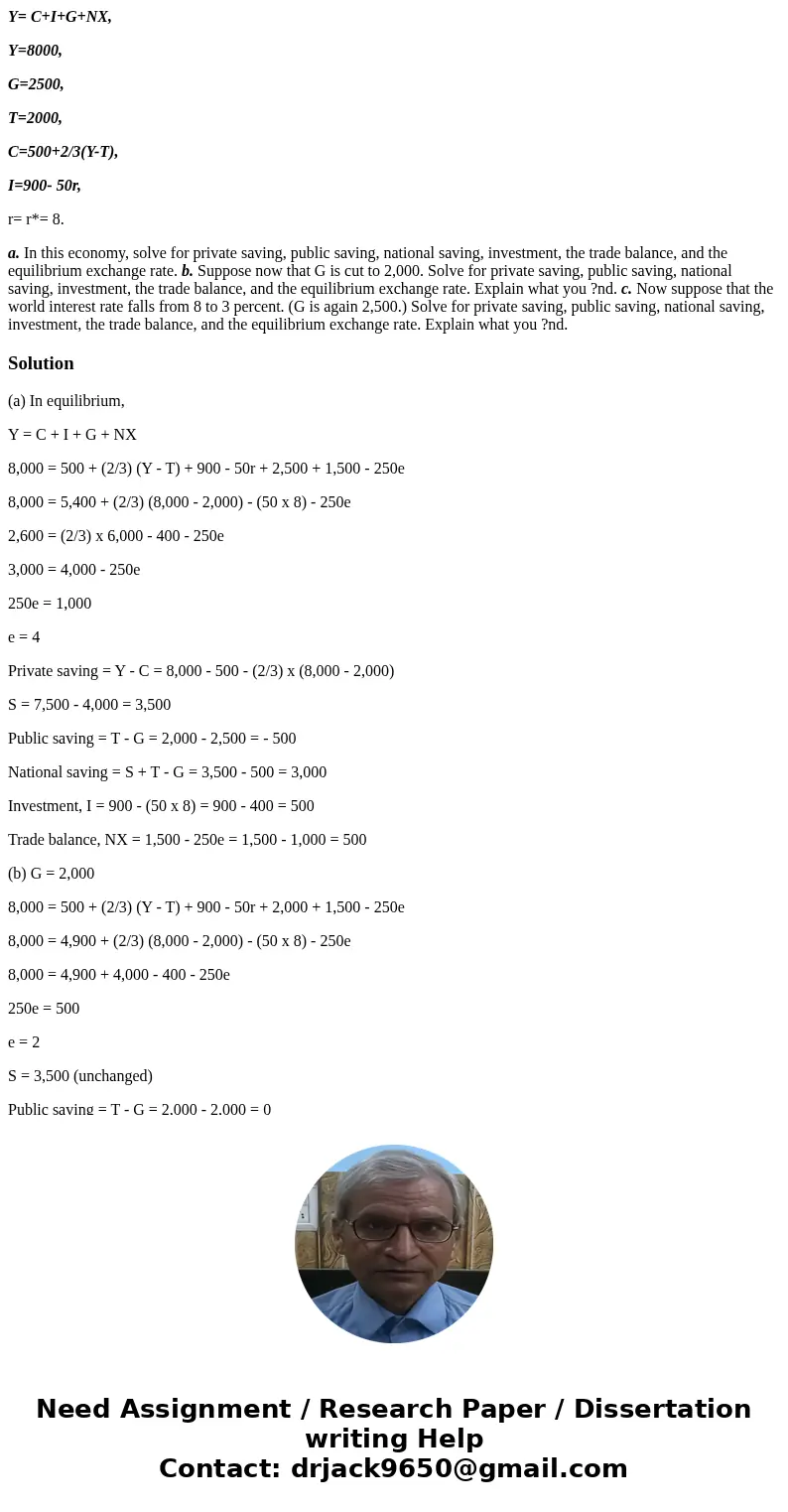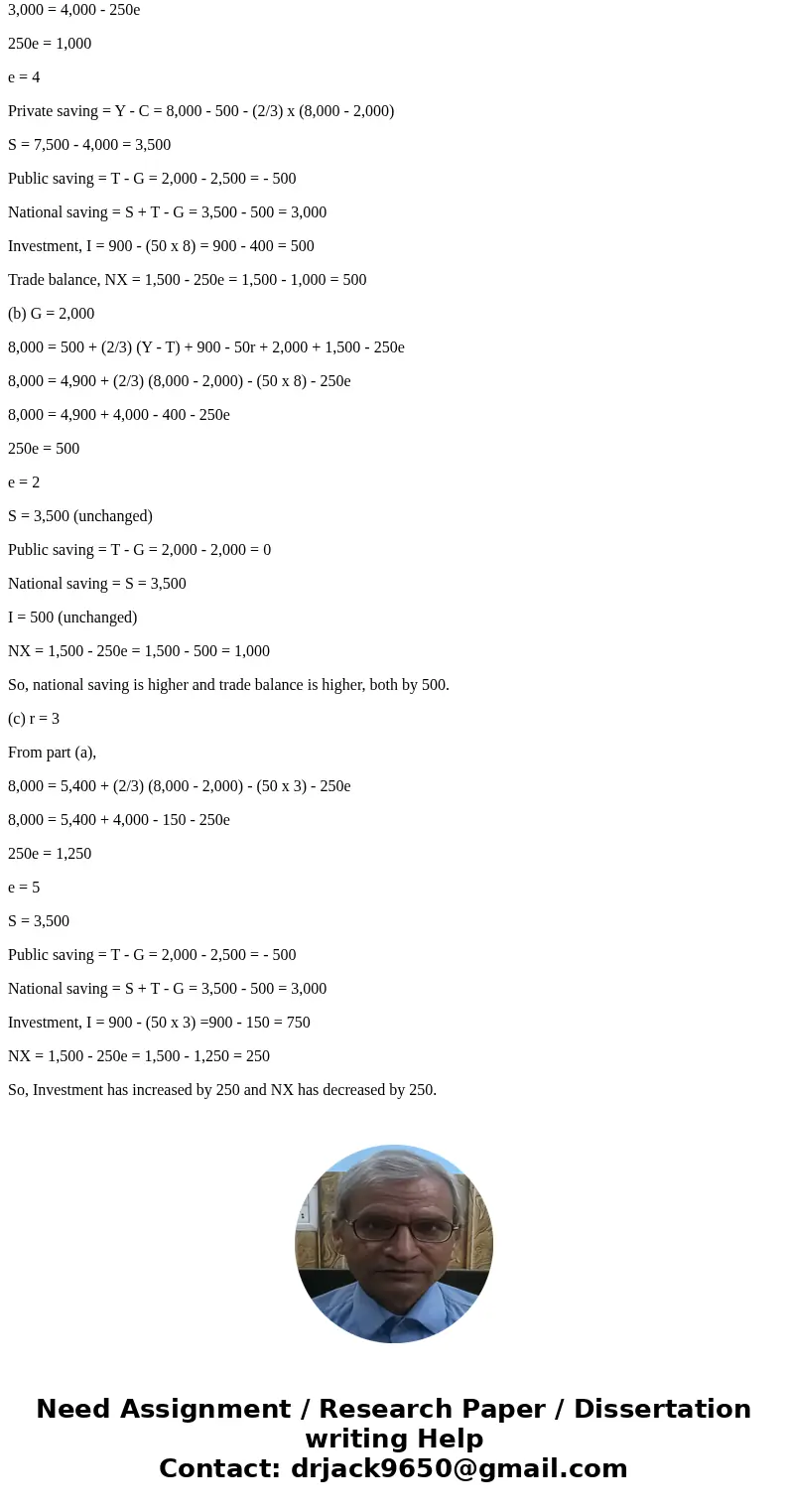Y CIGNX Y8000 G2500 T2000 C50023YT I900 50r r r 8 a In this
Y= C+I+G+NX,
Y=8000,
G=2500,
T=2000,
C=500+2/3(Y-T),
I=900- 50r,
r= r*= 8.
a. In this economy, solve for private saving, public saving, national saving, investment, the trade balance, and the equilibrium exchange rate. b. Suppose now that G is cut to 2,000. Solve for private saving, public saving, national saving, investment, the trade balance, and the equilibrium exchange rate. Explain what you ?nd. c. Now suppose that the world interest rate falls from 8 to 3 percent. (G is again 2,500.) Solve for private saving, public saving, national saving, investment, the trade balance, and the equilibrium exchange rate. Explain what you ?nd.
Solution
(a) In equilibrium,
Y = C + I + G + NX
8,000 = 500 + (2/3) (Y - T) + 900 - 50r + 2,500 + 1,500 - 250e
8,000 = 5,400 + (2/3) (8,000 - 2,000) - (50 x 8) - 250e
2,600 = (2/3) x 6,000 - 400 - 250e
3,000 = 4,000 - 250e
250e = 1,000
e = 4
Private saving = Y - C = 8,000 - 500 - (2/3) x (8,000 - 2,000)
S = 7,500 - 4,000 = 3,500
Public saving = T - G = 2,000 - 2,500 = - 500
National saving = S + T - G = 3,500 - 500 = 3,000
Investment, I = 900 - (50 x 8) = 900 - 400 = 500
Trade balance, NX = 1,500 - 250e = 1,500 - 1,000 = 500
(b) G = 2,000
8,000 = 500 + (2/3) (Y - T) + 900 - 50r + 2,000 + 1,500 - 250e
8,000 = 4,900 + (2/3) (8,000 - 2,000) - (50 x 8) - 250e
8,000 = 4,900 + 4,000 - 400 - 250e
250e = 500
e = 2
S = 3,500 (unchanged)
Public saving = T - G = 2,000 - 2,000 = 0
National saving = S = 3,500
I = 500 (unchanged)
NX = 1,500 - 250e = 1,500 - 500 = 1,000
So, national saving is higher and trade balance is higher, both by 500.
(c) r = 3
From part (a),
8,000 = 5,400 + (2/3) (8,000 - 2,000) - (50 x 3) - 250e
8,000 = 5,400 + 4,000 - 150 - 250e
250e = 1,250
e = 5
S = 3,500
Public saving = T - G = 2,000 - 2,500 = - 500
National saving = S + T - G = 3,500 - 500 = 3,000
Investment, I = 900 - (50 x 3) =900 - 150 = 750
NX = 1,500 - 250e = 1,500 - 1,250 = 250
So, Investment has increased by 250 and NX has decreased by 250.


 Homework Sourse
Homework Sourse